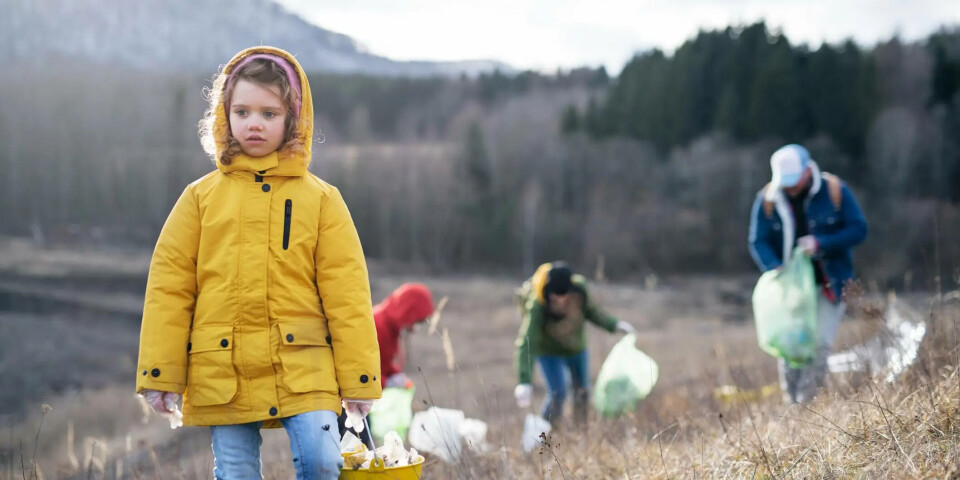THIS CONTENT IS BROUGHT TO YOU BY Oslo Metropolitan University - read more
Today’s six-year-olds are expected to face twice as many wildfires and five times more droughts than today’s adults
Our way of life threatens future generations, according to a researcher.

“We adults have a significant responsibility to pass on the planet in a sustainable way, but unless we take drastic action now, this will be extremely problematic,” says Marianne Takle.
She is a researcher at NOVA – Norwegian Social Research at OsloMet. She is also the author of a recent book on the topic.
Takle's research examines the gap between the commitments made in various national and global agreements and the corresponding policies in practice.
Signs point to worsening conditions
“There's a significant disconnect between how politicians claim they're addressing these responsibilities and how they follow through. If serious action is not taken now, the consequences will be severe,” warns Takle.

She refers to alarming projections: Today’s six-year-olds are expected to experience twice as many wildfires and tropical cyclones and three times more river floods than today's 55-year-olds.
They will also experience four times more crop failures, five times more droughts, and 36 times more heatwaves than today’s 55-year-olds. This is according to research from 2021.
“Future generations cannot address these issues themselves. They are excluded from the political decisions that will critically shape their lives. The combination of our immense influence and their lack of agency gives the current adult generation a profound responsibility,” says Takle.
While some measures have been implemented, Takle notes that practices vary widely.
“At the same time, there is clear rhetoric about our obligations to ‘consider future generations,’ but interpretations of this commitment differ greatly,” she says.
Takle says that what is completely clear, however, is that today’s adults have a unique opportunity to shape the ecosystems and well-being of future generations.
“The growing threat to future generations is a major reason I chose to write this book. It has been fascinating to investigate how governments fulfil – or fail to fulfil – their responsibilities,” she says.
Shortcomings at multiple levels
“Unfortunately, I found shortcomings at multiple levels, both nationally and globally," says Takle.
She explains that even in Norway, there is a paradox in the government's stance. On the one hand, it states that ‘we must ensure the preservation of nature for future generations.’ On the other hand, the purpose of the Government Pension Fund Global (aka the Oil Fund) is to ‘secure the long-term management of income from Norway’s oil and gas resources for the benefit of both current and future generations.’
Globally, the implementation of the UN’s Sustainable Development Goals (SDGs) reveals a significant gap between promises and actions.
“The disconnect can be found in the transition from global agreements to national implementation. The political institutions meant to safeguard future generations within nation-states are weak or nonexistent. Furthermore, legal commitments in constitutions are not always upheld in courts, although climate litigation has opened new political avenues,” the researcher says.
Failing to uphold commitments
If today’s children and those yet to be born are to inherit a healthy planet, action must be strengthened across many fronts, according to Takle.
“The 17 SDGs outlined in the UN’s Agenda 2030 are essentially a roadmap for transitioning the world towards sustainability. However, the major challenge is that nation-states fail to follow through on the commitments they have made,” she says.
She further states that things are far from running smoothly. She reminds us that just this past autumn, member states agreed to adopt a Pact for the Future.
This pact ensures that the UN's Agenda 2030 is followed up with political action.
Takle acknowledges that Norway excels in areas such as social and economic progress. However, she points out that Norway performs poorly in reducing CO2 emissions from fossil fuel exports, as well as in land conservation, protecting far too few areas.
Poor performance
In her book, Takle examines four policy areas where commitments to future generations are explicitly expressed. She then analyses the extent to which these commitments are upheld:
- The UN’s Agenda 2030 and its 17 Sustainable Development Goals
- National political institutions focused on future generations
- Constitutional provisions for the consideration of future generations
- Regulations on national public debt or savings for future generations
“I examined practices in Norway and Germany, as these countries argue that they take future generations into consideration in these areas,” she says.
Takle’s work is grounded in the concept of solidarity, which she defines as reciprocal support among equals.
However, since it can be difficult to imagine being in solidarity with people who have not yet been born, she has developed a concept of solidarity that combines two aspects.
The first aspect is that reciprocity can be indirect. This means that a person gives something to another person, but it is not necessarily the same person who gives something back.
“This principle underpins the welfare state, and such reciprocity can also extend across generations,” she explains.
The second aspect is the willingness to establish self-imposed institutional constraints. These constraints ensure that resources meant to be transferred to future generations are actually transferred.
According to Takle, these institutional constraints must take presedence over daily politics, compelling political authorities to pursue long-term goals.
“The Norwegian Constitution stands above day-to-day politics, and Article 112 is an excellent example of such an institutional commitment. It stipulates that we must preserve nature for posterity, meaning for future generations,” she says.
References:
Takle, M. Showing Social Solidarity with Future Generations, Routledge, 2024. DOI: 10.4324/9781003400806
Thiery et al. 'Intergenerational inequities in exposure to climate extremes. Young generations are severely threatened by climate change', Science, 2021. DOI: 10.1126/science.abi7339 (Abstract)
———
Read the Norwegian version of this article on forskning.no

This content is paid for and presented by OsloMet
This content is created by Oslo Metropolitan University's communication staff, who use this platform to communicate science and share results from research with the public. Oslo Metropolitan University is one of more than 80 owners of ScienceNorway.no. Read more here.
More content from OsloMet:
-
"We need to talk about how we assess teacher students"
-
Cannabis use in Norway has increased: “Not everyone needs moral lectures or worried looks"
-
Many children with ADHD do not thrive at school
-
An out-of-control race: Why we fear artificial intelligence
-
One in four seniors feels digitally discriminated against
-
Norwegians are among the least lonely in Europe




































